Creative work of academician Veljko Milković
...for to express a genius and his ingenuity to a simple person is already a lost battle...
The simplest and at the same time the most polite introduction of any individual makes a sentence that contains, first name, surname, profession i.e. professional engagement.
In the case of academician Veljko Milkovic, his profession and his occupation require confirmation of others, so that it becomes partly possible to understand the greatness and the significance of his achievements.
In Novi Sad, his city, he is famous as the best connoisseur of the Petrovaradin fortress, while on the territory of Serbia and former Yugoslavia, he is famous for self-heating eco-houses. Worldwide, there is no serious scientific circle that has not heard of our academician. Two thirds of the planet are researching his mechanical oscillator.
What can be said about a man for whom a glorious academician Bratislav Tešić (who was, among other things, twice a member of the board for the distribution of the Nobel Prize) said: “I am glad to live at the same time as Veljko Milkovic”, or Dr. Peter Lindeman who said about his invention: “…this is how this invention is classified among the most important inventions in last 300 years…” , or the best approved connoisseur of Nikola Tesla’s life and work professor Dr. Velimir Abramović: “Veljko’s oscillator is at the same time the best mechanical analogy of alternating current, it must be admitted, better than any Tesla’s analogy.” Finally, professors Nikhade, Patel and Bansal from the Indian University in Nagpur have officially published the results of energy surplus of academician Veljko Milkovic’s two-stage mechanical oscillator in Asian Scientific Journal.
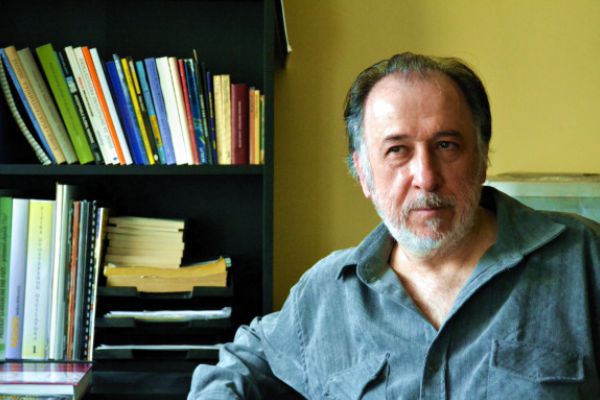
Besides listed names, there are lots of papers by eminent professionals who should be mentioned like Zoran Marković, Jovan Marjanović, Ronald Pugh, Nebojša Simin, Aleksandar Slavković, Colin Gaud, Jovan Bebić, Zlatko Pangalić etc. listed without their deserved titles of doctors and professors.
He has written 12 books which have been translated in several world languages and several documentaries have been based on them. He owns 114 inventions, and he has been granted numerous recognitions in the country and abroad, among all, two titles of an academician, October City Charter etc.
Biography
Veljko Milković was born in 1949 in Subotica (Republic of Serbia), and since 1952 he has been living in Novi Sad (Serbia), where he finished secondary school and studied History. Apart from being interested in past events, he is also a researcher, an inventor, an innovator and a writer. Furthermore, he works on futuristic projects. At the moment, he has around 116 inventions in various technical fields and 31 granted patents, some of which have been in use for decades.
He invented a self-heating eco-house, an innovative passive solar house design concept that enables huge energy savings in heating, cooling and lighting and which has been in use for decades. According to his designs, several such eco-houses were built throughout Serbia.
In his research he worked hard on gravitation phenomenon and also on the improvement of anti-gravitational experiments and, connected to that, inertial propulsion and pendulum drive systems. Milkovic is the "father" of pendulum pump technology, a water supply system with oscillating pendulum drive which eases pumping of water
He is very familiar with the Petrovaradin Fortress, a 320-year-old Austrian Empire fortification in the city of Novi Sad, Serbia, which he has been exploring for more than 65 years. He is currently a leading expert on a 20-km long underground military galleries complex below the Petrovaradin Fortress. In 1965, he discovered a "code" that "unlocked" the complex system of underground military galleries, which enabled faster and safer exploration. He is the creator of an alternative guide service for the fortress area and the first author to fill the gap in the literature about Petrovaradin Fortress and its deep underground.
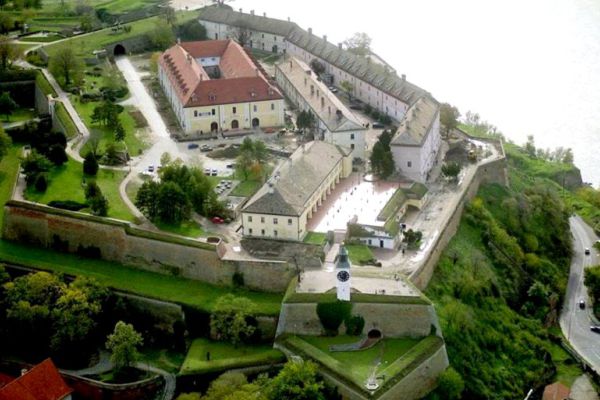
Petrovaradin fortress
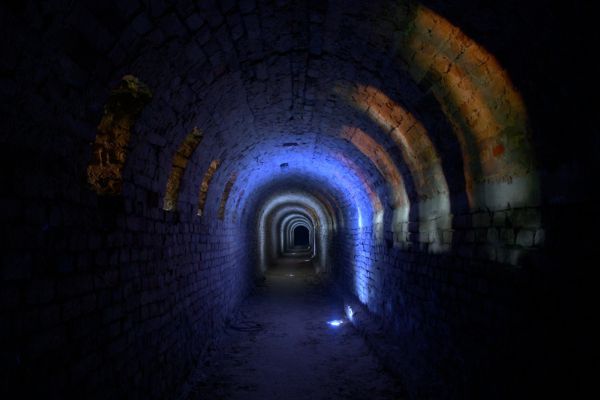
The underground tunnels
Since 1975, the librarian Srećko Drk from Petrovaradin has been hiring him as a guide for lesser-known parts of the fortifications - especially for the underground military galleries. In 1977, the Museum of the City of Novi Sad awarded him a certificate of appreciation for "wholehearted cooperation in the study of the Petrovaradin Fortress".
At the end of the seventies, as a member of the scientific and technical editorial staff, at the Cultural Center of Novi Sad, he organized and led notable forums on archeology and the Petrovaradin fortress, with the participation of academician prof. Dr. Bogdan Bruckner and Prof. Milan Vranić. The idea of modern dugouts as a new way of living gives him the impetus to maintain the intensity of research into underground galleries until the end of the seventies.
In 1983, at the "Vladimir Nazor" Library from Petrovaradin, Srećko Drk and Veljko Milković founded the "Club of Friends of the Petrovaradin Fortress".
In 1997 he announced the book entitled "Mysteries of Petrovaradin fortress", which was published as a feuilleton, a script and a book. That was the first time that the gap in the literature about Petrovaradin fortress and its underground has been filled. It is interesting that many journalists and authors like Mr. Živko Marković, a historian, claimed that subterranean military galleries represent the largest attraction in Petrovaradin.
In his numerous lectures and during short excursions he talked about dangers, but also about great tourist potential of Petrovaradin, Fruška Gora, Srem (Serbia) and the central part of the (river) Danube-basin.
He has been giving numerous public lectures on the mysteries of the past and archaeological discoveries, presenting his unique and unusual archaeological collection of numerous minerals and fossils, as well as remains of the previous civilizations, which he gathered from the middle Danube river basin.
Veljko Milkovic is an academician and full member of two professional academies; Serbian Academy of Inventors and Scientists and European Academy of Sciences. He was one of the pioneers and founders of the Solar Energy Association at the University of Novi Sad, Serbia in 1976. He is also the president of the Veljko Milkovic Research & Development Center, a non-profit scientific organization he founded with a group of associates in 2009.
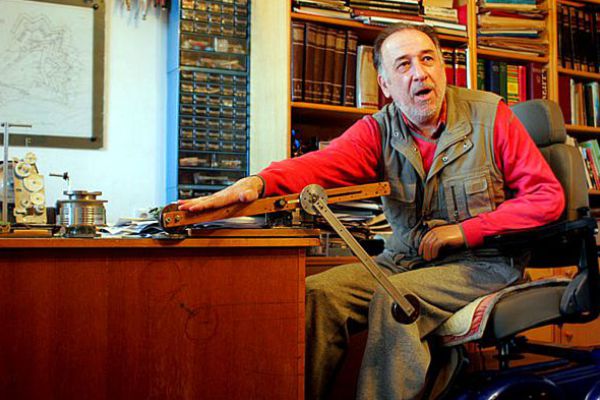
Veljko Milković demonstrating the basic principles of two-stage mechanical oscillator
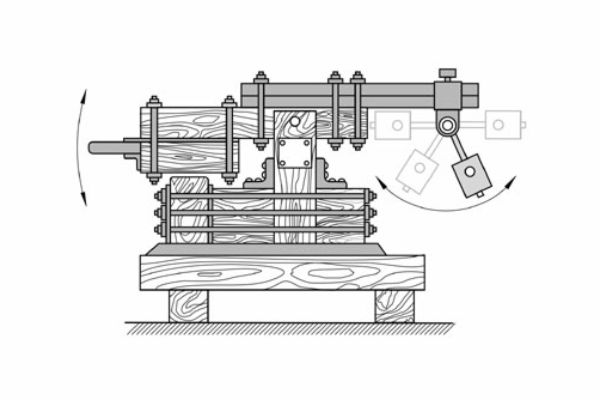
Two-stage mechanical oscillator
He is the author or co-author of 18 books, brochures and other publications, some of which have been translated into several languages and several feature-documentary films have been based on them; including:
"Solar sod houses - the house of the future", 1983.
"Ecological houses", 1991, printed in four unedited editions
"Forests for food production", 1992 - translated into Esperanto the same year.
"Towards anti-gravitation compact vehicles", 1994.
"Anti-gravity motor", 1996 - with translation into English.
"Perpetuum mobile", 2001.
"Petrovaradin through legend and reality", 2001.
"Petrovaradin and Srem - mystery of the past", 2003.
"The world of mysteries new views", 2004.
"Petrovaradin fortress over and underground" 2005.
"New tourist potentials", 2006.
"Petrovaradin fortress - cosmic labyrinth of discoveries", 2007.
"Gravitational Machines - From Leonardo da Vinci to the Latest Discoveries" (2013.)
"Energy turning point or apocalypse" (2016.)
"The Pannonian Atlantis" (2020.)
Reflective Panels for Solar Air Conditioning and Health-Safe Housing (2020),
Energy of Oscillations: from an Idea to the Realization (2020), etc.
In addition, he has published well-received feuilletons and scripts:
“Low-Energy Life” (1996),
“Energetic Potential of the River Bay” (1996),
“Previous Civilization’’ (1999),
“Mysteries of Petrovaradin Fortress” (1999),
“Petrovaradin Fortress between Legend and Reality” (1999), and
“Missing Civilizations” (2000).
Milkovic has also published more than twenty technical and other scientific papers in the field of energy and ecology, has taken part in about 30 scientific gatherings as well as many scientific research projects.
Based on his work, studies and books, a hundred of scientific papers have been published by international scholars, as well as many bachelor's, master's and doctoral (Ph.D.) theses have been defended at universities in Serbia and around the world.
Moreover, he has received many national and international awards for his work spanning over many decades. In 2002, he received the “November Charter of the City of Novi Sad” for his remarkable contribution and innovation in the field of ecology and energy, as well as a gold medal of the Novi Sad Fair for his invention – “Hand Water Pump with a Pendulum”.
His world-wide known invention, the “Two-Stage Mechanical Oscillator”, was declared one of the Top 100 Energy Technologies in the world by the New Energy Congress (USA) in 2006. The Energy Globe Foundation proclaimed his innovations "Self-Heating Eco-House" and "Hand Water Pump with a Pendulum" the national winners of the “Energy Globe Award” for 2009 and 2010. In 2024, Veljko Milkovic received the Tesla Spirit Award for realization of Nikola Tesla's vision of using gravity to drive machines by inventing the technology of the pendulum drive and successfully applying it to the operation of machines in water supply, power generation and heavy industry.

